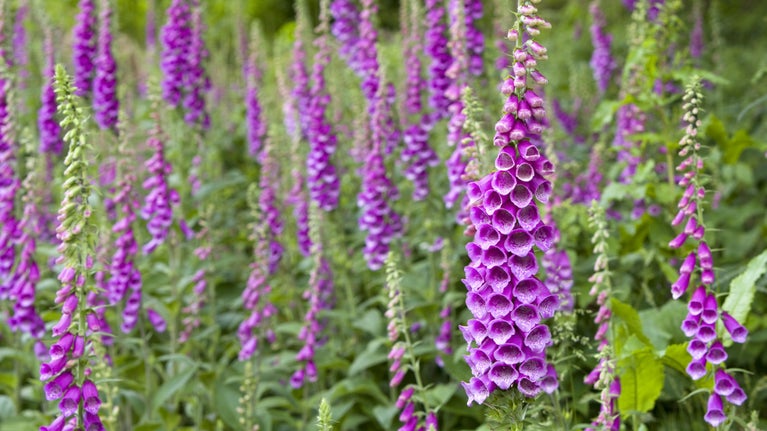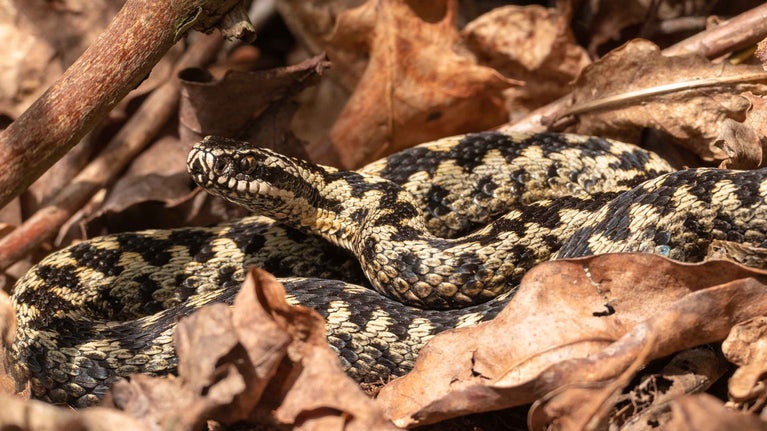Summer sights and sounds at West Runton and Beeston Regis Heath

Take a walk on the (summer) wildside. Flowers, trees, insects, animals, reptiles and amphibians will be all around you! You will see that the property is home to an enormous range of flowers. Of course not all will be blooming when you visit but plenty will be.
Flowers
You should be able to spot Foxgloves which can be seen in the shady woodlands and on the heaths.
They flower from early summer to the autumn. The tall purple or white flower spikes are produced in the plant's second year. When the foxglove flowers are over, seeds are left behind that will provide a succession of flowers.
You should also be able to spot red campion which has a bright rose-red flower and hairy leaves and stem. You will see them under hedges and in the woodlands. In the woodland they usually come into flower as the bluebells start to fade.
Look out for the strange parasitic plant, which is Dodder, growing entwined round the Gorse on the top of Incleborough Hill. Inhale its heavy scent in mid summer.
Especially noticeable are the ferns, especially the Scaly Male-fern, whose croziers unfurl to reveal their stunning golden-brown scales. This fern is easily identified, but not as numerous as the Broad Buckler-ferns.
As evening approaches and the sun sinks the scent of the honeysuckle becomes more intense, watch for bats and listen for the churring of nightjars.
Towards the end of summer heather on the heathland bursts into flower. It is easier to see the heather flowers, at this time, as the foliage is not so impenetrable.

Birds
Listen out for the migrant birds such as willow warblers.
As the days grow longer the birdsong grows in volume and the dawn chorus is very evident especially in the beech wood alongside the main drive beyond the caravan site. Listen for the two common woodpeckers. The green woodpecker is distinguishable by its laughing call and can be seen feeding on the heathland, gobbling up ants. The great spotted woodpecker’s ‘song’ is in fact a drumming sound which is made by hitting tree branches with their bill. This is a combined warning to competitors and mating call.
Sometimes confused with the lesser spotted woodpecker, the great spotted woodpecker is, as its name suggests, larger in size. It is around the same size as a blackbird compared to the lesser spotted which is sparrow-sized.

Repties and amhibians
This area is well known for its reptiles the adder being the most common. The adder, or viper as it is sometimes called, is the only venomous reptile in the UK, but is generally shy and non-aggressive. It is a fairly small and stocky snake. It can be variable in colour, with males being usually grey and the females reddish brown. Both sexes have a distinctive diamond shaped or zigzag pattern along their backs.
Adders can be seen basking in the sun on the heath. They get their warmth from the sun and their immediate environment. Reptiles cannot regulate their own body temperature like mammals do.
Never attempt to pick up an adder. And please keep dogs under very tight control. Dogs can be very badly affected by adder bites.
Slow worms and common lizards will also seek out sunny spots to warm themselves.

Animals
Occasionally muntjac, roe and red deer break cover and sprint across the paths.

Insect life
The trees are buzzing with life, insects are on the wing. The rides between the trees are ideal spots to see butterflies. Look out for brimstone, comma, gatekeeper, brimstone, orange tip, fritillaries, common blue, peacock, purple hairstreak around the tops of oak trees, speckled wood and the white admiral, quite common here in this area.
